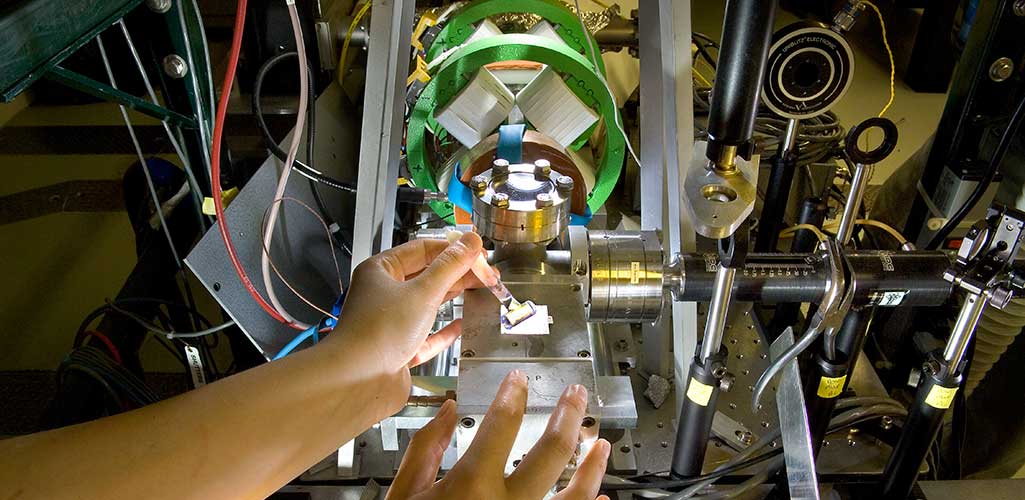Accelerator Center for Energy Research
Studies chemical reactions and other phenomena using high-energy electrons and gamma rays

The Accelerator Center for Energy Research (ACER) develops and operates instruments to study reactive chemical species produced by ionizing radiation. ACER includes two accelerators: the Laser Electron Accelerator Facility (LEAF), a 9-million-electron-volt (MeV) laser-activated electron accelerator with 15 picosecond time resolution, and a 2 MeV electron Van de Graaff. Scientists use short pulses of accelerated electrons to initiate chemical reactions. They study the reactions by measuring how the reactants absorb various wavelengths of light (ultraviolet, visible, near-infrared and mid-infrared) and how that absorption changes with time as the reaction proceeds.
To see how you can get involved with this facility, contact James Wishart at (631) 344-4327
Basic Research
Core ACER activities include: (1) Investigating the molecular fragments created when solutions are irradiated and understanding how these fragments react to produce longer-lived reactants, and (2) Using those reactants to study the details of chemical reactions (for example, the thermodynamics, rates, and reaction mechanisms of charge transfer systems)—particularly in reactions underlying important energy technologies such as nuclear energy and converting sunlight to fuels.
Applied Research
ACER accelerators have been used to study radiation-induced synthesis of polymers (for example, hydrogels used to treat wounds and fabrics used to extract uranium from seawater), and the reaction mechanisms of key enzymes, including those that protect us from oxidants—which, when defective, may cause diseases such as amyotrophic lateral sclerosis (ALS).
Test Facilities and Expertise
The ACER staff have expertise in radiation chemistry and advanced detection methods in pulse radiolysis, an experimental research method that scientists use to investigate the rapid chemical and physical changes that happen in matter following the absorption of ionizing radiation. Pulse radiolysis is a complementary method to laser photochemistry and electrochemistry, and it can provide an easier route to understanding the details of certain types of reactions than these other techniques.
Workforce Development
ACER participates in the educational internships and workforce development programs offered across disciplines at Brookhaven Lab. On average, four undergraduate interns and one or two early career faculty members participate in summer programs each year.
.



